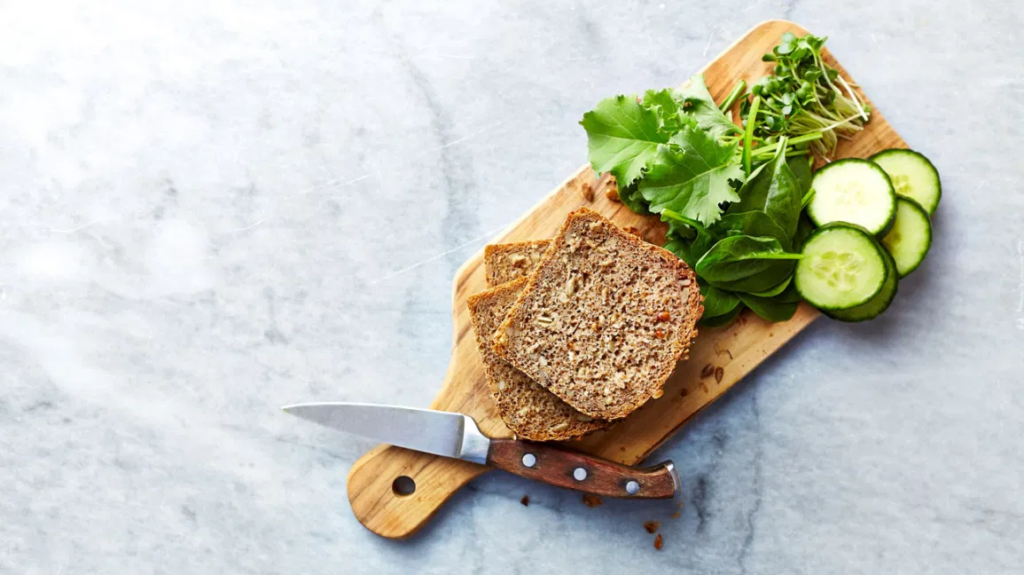
What is the Healthiest Bread You Can Eat?
Whole wheat and whole grain are often the same. Whole grain breads must contain 100 percent whole grain. Whole grains contain bran, endosperm, germ, and fiber. They are also packed with iron and other nutrients. Whole grain breads are also lower in saturated fat, and contain more fiber and protein than white or wheat breads. However, you should always check the label before you buy them.
Challah
If you have ever wondered why challah is considered to be the healthiest bread in the world, it is because it is made with the most eggs. It is also gluten-free, so it’s even healthier than regular bread. Challah is a Jewish sacrament, and the bread is eaten during Shabbat and on the holiday of Purim. If you don’t want to be a part of this Jewish tradition, you can make challah at home.
A challah recipe will usually call for a mixture of whole grains, such as rye, oats, cornmeal, and water. This combination of grains helps keep you full longer and prevents you from overeating. This bread also has low-fat ingredients, making it perfect for sandwiches and French toast. It also contains no butter or oil, meaning you can have two slices and still eat a lot of bread. The United States Department of Agriculture lists that two-ounce slice of challah contains about 160 calories, 260 mg of sodium, and some iron.
Multigrain bread
Whole grain or multigrain bread contains many nutrients and fiber from multiple grains. Whole grains are much more nutritious than refined versions of bread. They also contain more fiber and B vitamins than refined bread. Whole wheat bread is made from whole grains. You should choose a multigrain bread instead of refined bread for maximum health benefits. Here are some reasons why. Listed below are just a few of the benefits of whole grain bread.
Whole grain bread is better for your health than white bread. It contains fiber that your body cannot digest. Fiber keeps bowel movements regular, which reduces the chances of developing type 2 diabetes or heart disease. It also helps to control blood sugar levels by lowering the GI (glycemic index) of a food. Also, it contains the whole grain and prevents sugar from being absorbed into the blood stream.
Flaxseed bread
Flaxseed bread is a popular alternative to fish and krill oil. High in omega-3 fatty acids and fiber, flaxseed bread has many health benefits. Plus, flax seeds are great sources of antioxidants and protein. Not only do they taste great, but flaxseed breads are also high in fiber, which will help improve the nutritional profile of any meal.
Alvarado’s brand of flourless, vegan bread contains whole flax seeds and sprouted organic whole wheat berries. They are sweetened with organic dates. Flaxseed bread has six grams of protein per slice. Sonoma County-based Alvarado breads contain no yeast, no sugar, and no added salt. Alvarado makes five varieties of breads with flaxseed and wheat bran.
Sourdough bread
Sourdough bread is made from a combination of yeast and lactobacilli, which are naturally occurring bacteria. This process breaks down the protein gluten into amino acids, which are more easily digested. Because the bread’s phytic acid content is reduced, sourdough has less phytic acid than other breads. The resulting higher levels of lactic acid are also easier on the digestive tract, making it more digestible and easier on the body to absorb minerals.
Although sourdough is not gluten free, regular consumption may help people who suffer from gluten intolerance. The process of fermentation may also help people with celiac disease, though this isn’t yet proven. Talk with your doctor to ensure that sourdough is suitable for you. Sourdough may also help moderate auto-immune conditions, but you should always consult your doctor before making changes in your diet.
Pumpernickel
The best bread for your health is a dark, crust-less variety called Pumpernickel. It is made from ground rye berries and is similar to rye flour, but with more nutrients and a lower glycemic index. It also contains fiber and plant lignans and pairs well with many ingredients, including nuts. This type of bread is also rich in protein, fiber, vitamins, and phytochemicals.
The best way to store pumpernickel is in its original packaging and at room temperature. The bread is usually good for about three to five days at room temperature. Pumpernickel bread is also stored well in the fridge, and can even be frozen for up to six months. It is not recommended to keep pumpernickel bread in the refrigerator, however; you should consume it as soon as possible.
